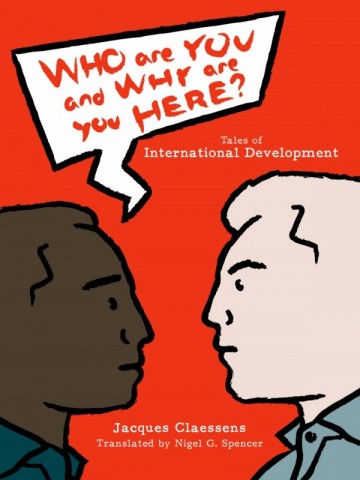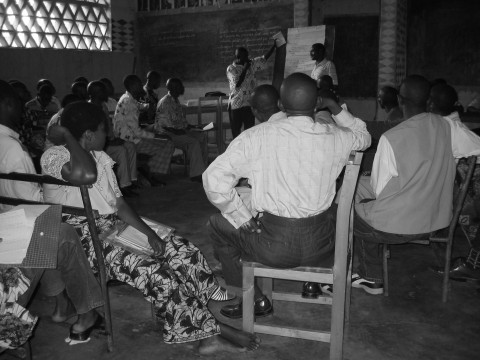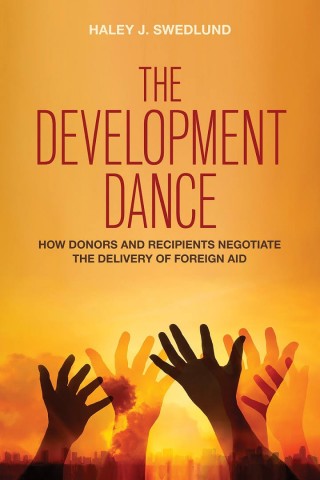I have previously noted my interested in the expanded journal version of people recounting their experiences (e.g. this recent book on the Ebola response). The style (and title) of Jacques Claessens "Who are you and why are you here?" (2018), which was originally published in French in 2013 and translated in this version by Nigel G. Spencer, looked appealing. While interesting, I did not as much enjoying the fictionalization of the book. At least for me, this reduced the interest that I typically have of first-hand personal narratives. The book does open some doors and windows into problematic behaviours and decisions in the sector and might be a starting point for discussions, particularly for those unfamiliar with the sector.
For those interested to gain more skills that are relevant to development and humanitarian activities, this post will list free, online resources. Each includes a brief description. If you have other suggestions of free training options, send me an email and I will add them. I have recommended that you try to make this a habit - completing 2 to 3 courses every year. This will keep expanding your knowledge and skills and convey to potential employers that you are actively upgrading your knowledge and skills as a life-long learner.
- Global Health Learning Center: https://www.globalhealthlearning.org/courses
One of the largest collections of online short courses that I know. The courses largely revolve around health, but also include courses on monitoring and evaluation, communications and knowledge management. This project is funded by USAID. Certificates are issued after course completion, by MEASURE Evaluation and USAID. All are available on-demand (not run on specific dates / periods of time).
- Harvard PDIA course: https://bsc.cid.harvard.edu/online-course
This course is only run periodically. There are two courses, each cover aspects of the Problem-Driven Iterative Adaptation approach. This course is longer and more engaged that a typical short course. Highly recommended.
A large listing of online courses. Certificates are not issued for these courses (with a few exceptions), but you could say that you completed these courses on your CV. There is a large listing of topics, many of which are highly relevant to working in the development and humanitarian field. This topics are very broad, from the SDG indicators to food safety and humanitarian coordination.
- CANADEM Online Training (with Kaya): https://www.training.canadem.ca/
Some courses require registration with the CANADEM roster (a humanitarian placement agency).
UNICEF offers a large set of online short-courses. The platform is not as user friendly as the Global Health Learning Center, but has a similarly large offering of short courses.
- EvalPartners: https://elearning.evalpartners.org/
A number of evaluation-related courses are available via this platform. The courses are on-demand, you can take them any time.
- Canadian Tri-Council :http://www.pre.ethics.gc.ca/eng/education/tutorial-didacticiel/
Ethics course, research focused, but generally useful and ought to be applied more in practice.
- Government of Canada: https://cfc-swc.gc.ca/gba-acs/course-cours-en.html
Gender-based Analysis Plus (GBA+) course.
A single course on monitoring and evaluation in the context of rural development.
- International Center on Nonviolent Conflict: https://www.nonviolent-conflict.org/online-courses/
A limited set of time-specific courses (set start and end dates). Excellent resources for those interested in understanding or using non-violent advocacy, social movements, citizen power.
- Tufts Short Courses: https://tufts.qualtrics.com/jfe/form/SV_4NIf8BvrmMbc5Ct
Nine courses offered, largely around nutrition and agriculture.
- Peace Operations Training Institute: https://www.peaceopstraining.org/
These are courses that are often required before UN deployments. These courses technically are fee based. However, recently these courses were made available to members of CANADEM (https://canadem.ca/). Assuming that is still the case, you can register and then access these courses freely.
- United States Institute of Peace: https://www.usip.org/academy/catalog
Courses relate to peace, peace making and conflict resolution. Not all are available online, and not all are free. However, there are some excellent free, online courses that can be taken here.
- Sphere Project: https://www.spherestandards.org/online-courses/
Sphere offers online short courses related to humanitarian standards. Note: Not all listings on this page are courses, some are stand-alone videos.
- LeaderNet: https://leadernet.org/courses/
A selection of courses related to leadership and health.
Is a MOOC (Massive Open Online Course). Topics range widely and expand on an on-going basis. Courses are offered by universities, and certificates (in the "verified" stream" can be offered - at a cost), otherwise you can complete the courses freely without one. Courses include sustainable development, leadership, theory of change, management et cetera.
- Coursea: https://www.coursera.org/browse
This is similar to Edx, a platform of MOOCs. A larger offering than Edx. Similar model of being able to complete courses freely, or have them recognized through a relatively small fee. Examples:
The practice of development is messy. Far too often it is much more messy we tend to acknowledge. That messiness often does not appear RCTs or evaluations, but it has a significant impact on the implementation of activities. One of the layers of messiness is the negotiation between donor and recipient governments, covered in Haley J. Swedlund's "The Development Dance: How Donors and Recipients Negotiate the Delivery of Foreign Aid" (2017). The author explains: "This book wrestles with a basic problem: both agencies and governments have trouble making credible commitments. This book is about how donor agencies like USAID and recipient governments like Uganda negotiate the delivery of foreign aid. It is about how the two parties engage in aid policy bargaining, or what I refer to in his book as the "development dance." More specifically, it is about how donor agencies and recipient governments attempt to demonstrate the credibility of their promises, and how their difficulty doing so affects the sustainability of aid policy compromises over time." (p. 2)
The problem? "A common complaint among development practitioners is that new aid practices and policies are not given enough time to become effective. Why is this? Best practices regarding aid delivery are notoriously fickle. In the eighties, structural adjustment was the norm. In the nineties, project aid and support to NGOs became fashionable. At the turn of the twenty-first century, budget support was all the rage. Now donor agencies are crazy fir results-based aid. Yet we know very little about why policies and practices often fall by the wayside (sometimes only to be picked up again twenty, thirty years down the road)" (p. 5)
The challenge is that "the relentless focus measuring the effectiveness of aid often causes us to overlook how the policies of foreign aid actually come to exist in the first place and how likely it is that such practices will remain over the long term. It also means that foreign aid scholars often assume – either implicitly or explicitly – that aid programs are actually designed to be effective, and evaluate them accordingly" (p. 4).
Example: "In the midst of a brutal civil war, the Work Bank, for example, spent more than $45 million in Sierra Leone on building and maintaining roads. Thirty-three percent of the funds went toward compensating contractors for lost time and the destruction of their efforts (Easterly 2003s, 36). There is disagreement about why the World Bank continued to fund road projects in the midst of a civil war, but it is clear that it was not about effectiveness" (p. 5).
Swedlund argues that "the choices in aid delivery are neither random nor driven exclusively by aid effectiveness concerns or the strategic interests of donor countries. Rather, choices in aid delivery are the product of negotiated compromise between donor agencies and recipient governments… designing more effective ways of delivering foreign aid is not just about finding better ways of meeting recipient needs. It is also about incentivizing both donor agencies and recipient governments to keep their promises over the long term" (p. 17). This is important because if "a government is not able to accurately plan for incoming sources of revenue, whether they are higher or lower than predicted, it is unlikely to use the resources efficiently when they do arrive. As a donor official in Ghana put it, if a recipient country gets $50 million on the last day of the year, what is the country supposed to do with it? In practice, what habitually happens is that makeshift and poorly designed initiatives are quickly thrown together so that the donor agency is able to disburse the funds and the recipient government does not lose out on aid dollars" (p. 85).
Way forward? "Building aid delivery mechanisms that will last beyond an initial period of enthusiasm requires us to design institutions that incentivize both donor agencies and recipient governments to live up to their commitments" (p. 131).
The most read blog posts of 2017:
1. List of Ethiopian Academic Journals
2. Conducting Research in Ethiopia
3. Essential Development Studies Books
Looking forward to more in 2018, with a continued focus on book reviews / commentaries (despite the fact that four of the five most read of 2017 were not book reviews, but resources).
Latest peer reviewed articles, book chapters, reports, and working papers...
Read Logan's latest book reviews and research updates...


